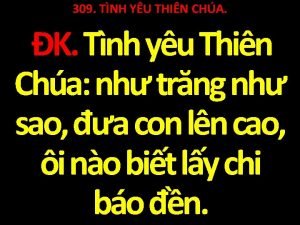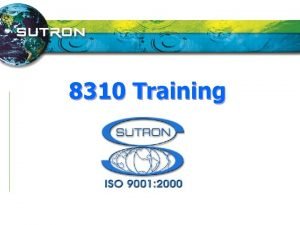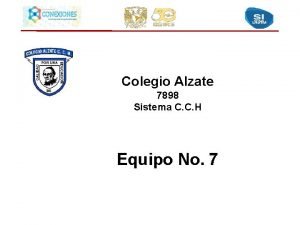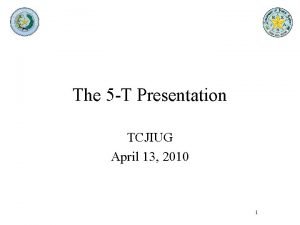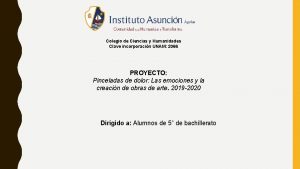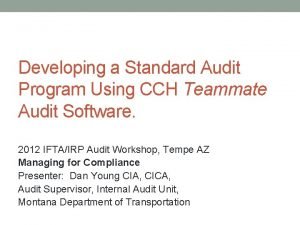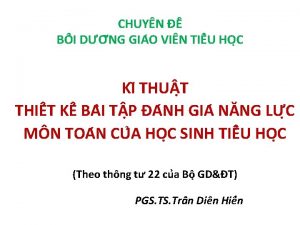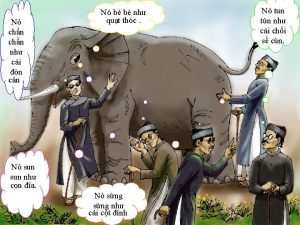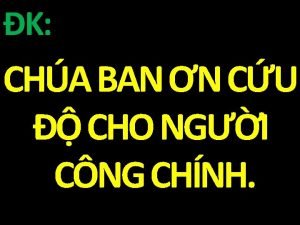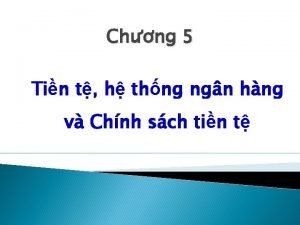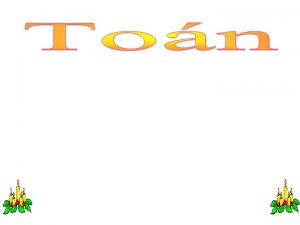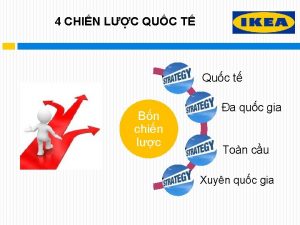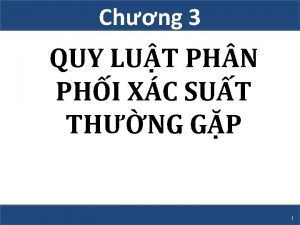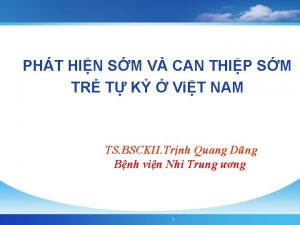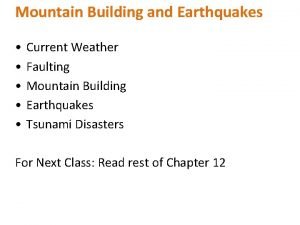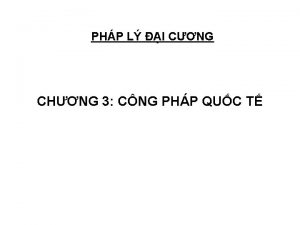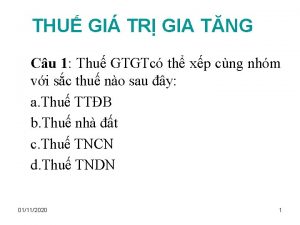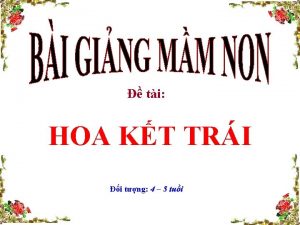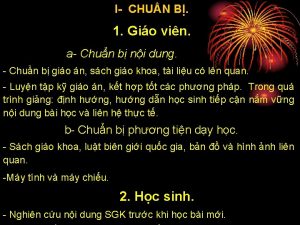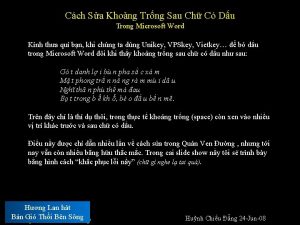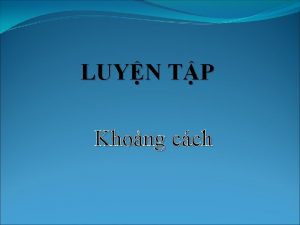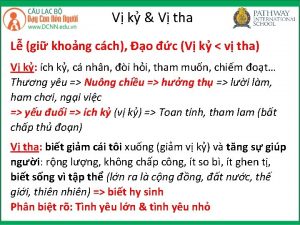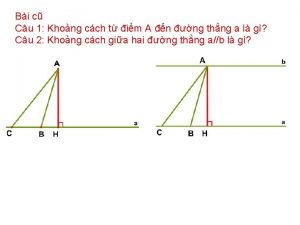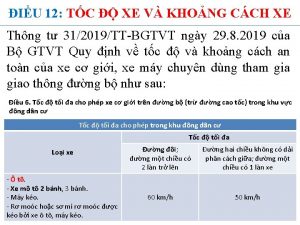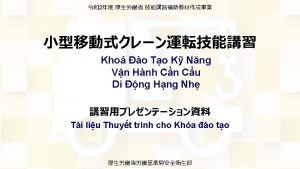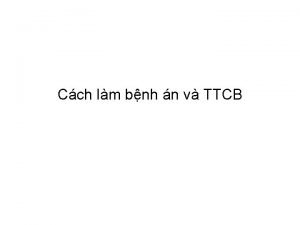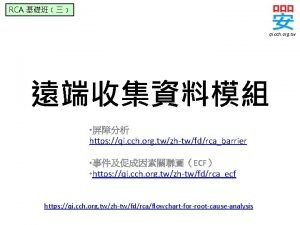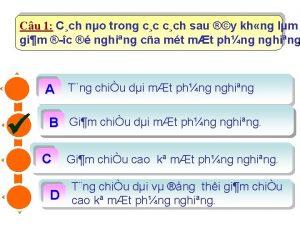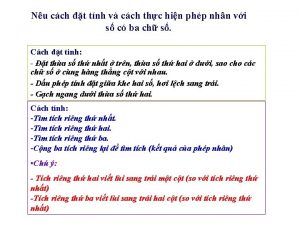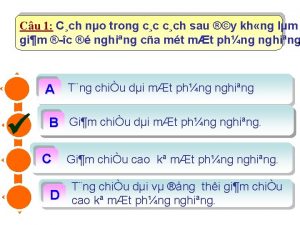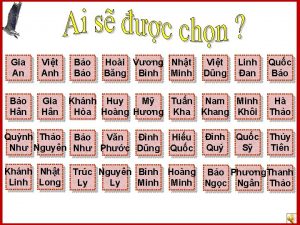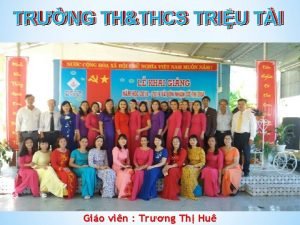KHONG CCH GIA O TI TRNG V NHU

























































- Slides: 57

KHOẢNG CÁCH GIỮA ĐÀO TẠI TRƯỜNG VÀ NHU CẦU CỦA NHÀ TUYỂN DỤNG ĐỀ XUẤT GIẢI PHÁP TRONG HOẠT ĐỘNG ĐÀO TẠO NHẰM N NG CAO NĂNG LỰC TUYỂN DỤNG SAU KHI TỐT NGHIỆP CỦA SINH VIÊN KHOA NGOẠI NGỮ KINH TẾ Tháng 12. 2016 Báo cáo viên: Đinh Ngọc Anh

NỘI DUNG CHÍNH I. BỐI CẢNH VÀ YÊU CẦU THỰC TIỄN II. CƠ SỞ LÝ LUẬN III. ĐỀ XUẤT GIẢI PHÁP

I. BỐI CẢNH VÀ YÊU CẦU THỰC TIỄN

BỐI CẢNH Độ chênh giữa yêu cầu của nhà tuyển dụng và khả năng đáp ứng công việc của nhân viên trẻ Người lao động mới ra trường từ góc nhìn của nhà tuyển dụng: § Thiếu những tiêu chuẩn chung: về kiến thức chuyên ngành so với yêu cầu thực tế của vị trí công việc tuyển dụng => Có thể do phương pháp đào tạo chưa hợp lý; bằng cấp chưa phản ánh đúng năng lực thực tế § Tâm lý coi trọng bằng cấp => chỉ tập trung chuẩn bị 1 loạt các loại văn bằng § Thiếu kiến thức xã hội: thông tin về đơn vị ứng tuyển, kiến thức thực tế cập nhật, thông tin thị trường về ngành nghề § Thiếu sự tự tin và quyết đoán, đam mê , yêu nghề=> thiếu ổn định, tâm lý “đứng núi này trông núi nọ”, dấu hiệu của sự thay đổi thỏa hiệp khi phải lựa chọn; lựa chọn công việc chưa phù hợp; § Thiếu sáng tạo trong công việc § Thiếu kiên nhẫn, nóng vội: mong muốn mọi việc suôn sẻ, yêu sách phải được đáp ứng, thu nhập, nhu cầu khẳng định bản thân

BỐI CẢNH Khoảng cách khá xa giữa Đào tạo và Sử dụng lao động Nhà tuyển dụng Thiếu Lao động đáp ứng các kỹ năng làm việc ü Phải đào tạo lại lao động do Chuyên môn đào tạo từ trường chưa sát thực tế, chưa đáp ứng yêu cầu công việc ü Đánh giá cao thái độ của người lao động: trung thực, trách nhiệm, ham học hỏi… ü Chưa thực sự coi trọng việc hợp tác đào tạo, tạo nguồn lao động ü Thiếu cơ chế và chính sách tuyển dụng hiệu quả ü

BỐI CẢNH Khoảng cách khá xa giữa Đào tạo và Sử dụng lao động Trường đào tạo ü Đào tạo theo phong trào, tràn lan ü Không nắm bắt thông tin thị trường lao động ü Đào tạo không gắn liền tới chất lượng sản phẩm đầu ra và được sử dụng như thế nào ü Không cập nhật với sự thay đổi của thị trường lao động (công nghệ, thiết bị …. ) ü Thiếu thông tin và thiếu hợp tác, liên kết với doanh nghiệp ü Không hiệu quả, Thiếu thực hành, ứng dụng thực tiễn trong các hoạt động dạy và học

BỐI CẢNH Khoảng cách khá xa giữa Đào tạo và Sử dụng lao động Ý kiến phổ biến từ người học/ sinh viên: § Nhận thức về những kỹ năng sinh viên cần chuẩn bị: ü Kỹ năng giao tiếp ü Kỹ năng sắp xếp công việc hợp lý ü Kỹ năng thuyết trình ü Kỹ năng thuyết phục ü Kỹ năng làm việc nhóm ü Rèn luyện thái độ đối với công việc § Nhiều chương trình dành cho giới trẻ mang tính cộng đồng cao nhưng mới dừng ở việc thúc đẩy tinh thần, còn rèn luyện kỹ năng nhiều § Chỉ có thể hoàn thành tốt công việc khi có một thái độ cùng với chuyên môn và kỹ năng tốt http: //tuoitre. vn/tin/nhip-song-tre/20160920/thai-do-sinh-vien-diemcong-voi-nha-tuyen-dung/1174278. html

BỐI CẢNH Nhiều thông tin, Thiếu Khung chuẩn để cơ sở đào tạo tham chiếu? Trường Đại học FPT: Yêu cầu chính: 1) Kiến thức chuyên môn 2) Ngoại ngữ Kỹ năng mềm 1) Làm việc nhóm 2) Quản lý thời gian 3) Giao tiếp, thuyết trình 4) Đặt mục tiêu và lập kế hoạch http: //daihoc. fpt. edu. vn/vi/ky-nang-can-thiet-de-ghi-diem-voi-nhatuyen-dung

BỐI CẢNH Nhiều thông tin, Thiếu Khung chuẩn để cơ sở đào tạo tham chiếu? Đại học Đông Á 7 điều quan trọng hơn bảng điểm trong mắt nhà tuyển dụng: 1. Cách quản lý thời gian 2. Kỹ năng làm việc 3. Các câu lạc bộ và hoạt động tình nguyện 4. Kỹ năng viết 5. Kỹ năng nói trước công chúng 6. Mạng lưới mối quan hệ của bạn: 7. Cách bạn thể hiện chính mình http: //donga. edu. vn/dieuduong/Ky. Nang/tabid/2358/cat/1581/Article. Detail. Id/1 6380/Article. Id/16378/Default. aspx

BỐI CẢNH Nhiều thông tin, Thiếu Khung chuẩn để cơ sở đào tạo tham chiếu? Chuyên gia tư vấn Sinh viên mới ra trường cần kỹ năng gì? ü ü ü ü ü Khả năng thích nghi nhanh Nhún nhường và nhẫn nại Cập nhật thông tin Tự quản thời gian Nói trước công chúng Kỹ năng kiềm chế cảm xúc Khả năng truyền đạt thông tin Kỹ năng làm việc nhóm Khả năng làm việc độc lập http: //chuyengiaphamhien. edu. vn/

BỐI CẢNH Nhiều thông tin, Thiếu Khung chuẩn để cơ sở đào tạo tham chiếu? Báo chí truyền thông Những kỹ năng sinh viên cần có? ü Kỹ năng truyền đạt thông tin ü Kỹ năng về máy móc công nghệ ü Khả năng lãnh đạo ü Khả năng làm việc nhóm ü Khả năng làm việc độc lập ü Khả năng thích nghi nhanh www. dantri. com. vn

BỐI CẢNH Nhiều thông tin, Thiếu Khung chuẩn để cơ sở đào tạo tham chiếu? Báo chí truyền thông: Những kỹ năng sinh viên cần có? Kỹ năng xác định mục tiêu phù hợp Kỹ năng tự nhận thức Kỹ năng giao tiếp Kỹ năng ra quyết định và xử lý vấn đề Kỹ năng làm việc theo nhóm Biết lắng nghe và học hỏi từ những lời phê bình của người khác • Năng động, tự tin và biết thuyết phục người khác • Kỹ năng ứng phó với cảm xúc căng thẳng • Kỹ năng làm chủ và tự đánh giá bản thân • • • http: //vietnamnet. vn/vn/giao-duc/9 -ky-nang-can-thiet-voi-sinh-vien 151633. html

BỐI CẢNH Nhiều thông tin, Thiếu Khung chuẩn để cơ sở đào tạo tham chiếu? NHÀ TUYỂN DỤNG CẦN http: //www. theatlantic. com/business/archive/2014/08/the-thingemployers-look-for-when-hiring-recent-graduates/378693/

NÊU VẤN ĐỀ WHO - Ai chịu trách nhiệm đào tạo? 2) WHAT- Đào tạo cái gì? 3) HOW – Đào tạo như thế nào? 1) TRƯỜNG ĐÀO TẠO WHO NHÀ TUYỂN DỤNG WHAT HOW NGƯỜI HỌC

II. CƠ SỞ LÝ LUẬN

K. A. S. H MODEL

The relationship between Skills - Knowledge - Attitudes - Habits Skills and Knowledge represent the KNOWING half of the KASH Box It is where most organizations spend most of their time, money and recruiting efforts Attitudes and Habits represent the DOING half of the KASH Box Deficiencies in this area cause most strategy shortfalls, business failures and personnel terminations http: //rpcleadershipassociates. com/food-for-thought/kash-

SKILLS

© Commonwealth of Australia 2013 CORE SKILLS FOR WORK DEVELOPMENTAL FRAMEWORK

CORE SKILLS FOR WORK (CSFW) � Designed to make more clear and explicit a set of nontechnical skills and knowledge that underpin successful participation in work. � Provides a common reference point and language that will assist: + those who develop standards, curriculum, programs and learning and assessment resources to more clearly articulate the Core Skills for Work required for certain occupations + trainers, educators and those who work with job seekers to more explicitly address the development of these skills in learners, and to assist those they work with to more clearly articulate the skills they do possess and identify those that they would like to develop.

THE PURPOSE OF THE CSFW

CORE SKILLS FOR WORK IN CONTEXT “Non-technical skills, often referred to as generic or employability skills, contribute to work performance in combination with technical or discipline specific skills and core language, literacy and numeracy (LLN) skills. “work performance is also influenced by a range of factors relating to the

CSf. W: 10 Skill Areas, grouped under 03 Skill Clusters Cluster 1 - Navigate the world of work 1) Manage career and work life Work with roles, rights and protocols Cluster 2 - Interact with others 3) Communicate for work 4) Connect and work with others 5) Recognise and utilise diverse perspectives Cluster 3 - Get the work done 2) Plan and organise 7) Make decisions 8) Identify and solve problems 9) Create and innovate 10) Work in a digital world 6)

Skills Development Scotland, 2011 CAREER MANAGEMENT SKILLS FRAMEWORK

CAREER MANAGEMENT SKILLS FRAMEWORK A competency framework: consistent definition and description of management skills. Grouped in 04 themes: 1. Self – competences that enable individuals to develop sense of self within society 2. Strength – competences that enable individuals to acquire and build on their strengths and to pursue rewarding learning and work opportunities 3. Horizons – competences that enable individuals to visualise, plan and achieve their career aspirations throughout life 4. Networks – competences that enable individuals to develop relationships and network of support In all, the competences describe a series of SKILLS – ATTITUDES and CAPABILITIES that support an individual’s life chances

I. SELF competences that enable individuals to develop sense of self within society § § § I develop and maintain a positive selfimage I maintain a balance that is right for me in my life, learning and work roles I adapt my behaviour appropriately to fit a variety of contexts I am aware of how I change and grow throughout life I make positive career decisions

II. STRENGTH competences that enable individuals to acquire and build on their strengths and to pursue rewarding learning and work opportunities I am aware of my skills, my strengths and achievements § I build on my strengths and achievements § I am confident, resilient and able to learn when things do not go well or as expected § I draw on my experiences and on formal and informal learning opportunities to inform and support my career choices §

III. HORIZONS competences that enable individuals to visualise, plan and achieve their career aspirations throughout life § § § I understand that there is a wide variety of learning and work opportunities that I can explore and are open to me I know how to find and evaluate information and support to help my career development I am confident in responding to and managing change within my life and work roles I am creative and enterprising in the way I approach my career development I identify how my life, my work, my community and my society interact

IV. NETWORKS competences that enable individuals to develop relationships and network of support I interact confidently and effectively with others to build relationship § I use information and relationship to secure, create and maintain work § I develop and maintain a range of relationship that are important for my career journey §

(QĐ số: 1982/QĐ-TTg ngày 18/10/2016) KHUNG TRÌNH ĐỘ QUỐC GIA VIỆT NAM

Khung trình độ quốc gia Việt Nam (QĐ số: 1982/QĐ-TTg ngày 18/10/2016) s Bao gồm 8 bậc: + Bậc 1 - Sơ cấp I; + Bậc 2 - Sơ cấp II, + Bậc 3 - Sơ cấp III, + Bậc 4 - Trung cấp; + Bậc 5 - Cao đẳng; + Bậc 6 - Đại học; + Bậc 7 - Thạc sĩ; + Bậc 8 - Tiến sĩ. Chuẩn đầu ra bao gồm: � Kiến thức: Kiến thức thực tế và kiến thức lý thuyết; � Kỹ năng: Kỹ năng nhận thức, kỹ năng thực hành nghề nghiệp và kỹ năng giao tiếp, ứng xử; � Mức độ tự chủ và trách nhiệm cá nhân trong việc áp dụng kiến thức, kỹ năng để thực hiện các nhiệm vụ chuyên môn.

Khung trình độ quốc gia Việt Nam (QĐ số: 1982/QĐ-TTg ngày 18/10/2016) s Kỹ năng yêu cầu ở bậc đại học: Kỹ năng cần thiết để có thể giải quyết các vấn đề phức tạp. � Kỹ năng dẫn dắt, khởi nghiệp, tạo việc làm cho mình và cho người khác. � Kỹ năng phản biện, phê phán và sử dụng các giải pháp thay thế trong điều kiện môi trường không xác định hoặc thay đổi. � Kỹ năng đánh giá chất lượng công việc sau khi hoàn thành và kết quả thực hiện của các thành viên trong nhóm. � Kỹ năng truyền đạt vấn đề và giải pháp tới người khác tại nơi làm việc; chuyển tải, phổ biến kiến thức, kỹ năng trong việc thực hiện những nhiệm vụ cụ thể hoặc phức tạp. � Có năng lực ngoại ngữ bậc 3/6 Khung năng lực ngoại ngữ của Việt Nam. �

Khung trình độ quốc gia Việt Nam (QĐ số: 1982/QĐ-TTg ngày 18/10/2016) s Mức tự chủ và chịu trách nhiệm: 1) 2) 3) 4) Làm việc độc lập hoặc làm việc theo nhóm trong điều kiện làm việc thay đổi, chịu trách nhiệm cá nhân và trách nhiệm đối với nhóm. Hướng dẫn, giám sát những người khác thực hiện nhiệm vụ xác định. Tự định hướng, đưa ra kết luận chuyên môn và có thể bảo vệ được quan điểm cá nhân. Lập kế hoạch, điều phối, quản lý các nguồn lực, đánh giá và cải thiện hiệu quả các hoạt động.

Cappelli (2014) SKILL GAP SKILL SHORTAGE SKILL MISMATCH

SKILL PROBLEMS Cappelli (2014) Skill Gap – “shortfall in the basic skills of future employees” due to “the failure of the education system” Skill Shortage – shortage of some job-related skills associated with particular occupations” Skill Mismatch – referring to the supply and the demand of skills, either “oversupply” or “undersupply” Notes: Skill shortage – particular type of skill mismatch Skill gap – “a general form of skill mismatch”

RESPONSIBILITY OF THE PROVISION Cappelli (2014) 1. EMPLOYERS: + Recruiting, Retaining employees + Training and developing them to meet changing skills need Because: Employer practices are driving much of the employees’ perceived skill problems.

RESPONSIBILITY OF THE PROVISION Cappelli (2014) 2. SCHOOLS + not suited to organise work experience – the key attribute that employers want + work-based skills are easiest and cheapest to learn in the workplace through apprentice-like arrangements + Problems to practice on do not have to be created in the workplace because they exist already and solving them creates values for others + Observation and practice are easiest to do where the productive work is being done + Employment creates incentives and motivation that typical classroom cannot duplicate

RESPONSIBILITY OF THE PROVISION Cappelli (2014) + “Lack of information and data about skill per se - the standard classification of job requirement into knowledge, skills and abilities + “Education only maps onto part of the “knowledge” category”

HABITS

THE 7 HABITS Steven R. Covey, 1989 Be sold more than 25 million copies in 40 languages worldwide

Independence The First Three Habits: moving from dependence to independence (self-mastery) Habit 1 – Be Proactive: Don't sit and wait in a reactive mode, waiting for problems to happen before taking action. Habit 2 - Begin with the End in Mind Envision what you want in the future so you can work and plan towards it. Habit 3 – Put First Things First Talks about what is important and what is urgent. Priority should be given in the following order: 1) Important and Urgent 2) Important and not-urgent 3) Not Important and Urgent 4) Not important and Not urgent https: //en. wikipedia. org/wiki/The_7_Habits_of_Highly_Effective_People

Interdependence The Next Three Habits: working with others Habit 4 – Think Win-Win Genuine feelings for mutually beneficial solutions or agreements in your relationships. Value and respect people by understanding a "win" for all is ultimately a better long-term resolution than if only one person in the situation had gotten his way. Habit 5 - Seek First to Understand, Then to be Understood Use empathic listening to genuinely understand a person, which compels them to reciprocate the listening and take an open mind to being influenced by you. This creates an atmosphere of caring, and positive problem solving. Habit 6 – Synergize Combine the strengths of people through positive teamwork, so as to achieve goals that no one could have done alone. https: //en. wikipedia. org/wiki/The_7_Habits_of_Highly_Effective_People

Continuous Improvements The final habit: in both the personal and interpersonal spheres of influence Habit 7 - Sharpen the Saw Balance and renew your resources, energy, and health to create a sustanable, long-term, effective lifestyle https: //en. wikipedia. org/wiki/The_7_Habits_of_Highly_Effective_People

How individuals acquire career management skills Kolb’s Learning Cycle: 1. 2. 3. 4. Concrete experience – personal experience Reflective observation – what I have learned from experience Theorisation – how this learning has changed my view of world Active experimentation – putting the learning into practice (Career management skills framework, P 11)


KEY REASONS FOR LOW ENGAGEMENT Griffith and Burns (2013) 04 areas of KASH: Knowledge, Attitudes, Skills, and Habits 1. Students lack the ‘right’ knowledge “In order to make progress students need to know their current level of performance” “Highly engaged students also know where they want to go with their learning – they know why they need to persist, to take advice, to work hard” 2. Students lack the ‘right’ attitudes “What we’re talking about is learned behaviour in relation to their beliefs about themselves and their attitude to the way, in their view, the world works” “One such attitude that can develop is learned helplessness” http: //osiriseducational. co. uk/staffroom/article/key-reasons-for-lowengagement/

KEY REASONS FOR LOW ENGAGEMENT Griffith and Burns (2013) 04 areas of KASH: Knowledge, Attitudes, Skills, and Habits 3. Students lack the ‘right’ skills “Individual skills, such as expressing themselves clearly, listening actively, reflecting on their learning and understanding what they have to do to improve. , skills of working with others as learning takes place within a social context” 4. Students lack the ‘right’ habits “having the ability to do a task without any conscious thought; it becomes routine” “teachers who regularly get judged as ‘outstanding’ have got into the habit of starting with the end in mind” because they are clear about what norms they are looking for”, “they spend time training their students in the underpinning knowledge, attitudes, and skills required for them, if necessary, to change their habits. http: //osiriseducational. co. uk/staffroom/article/key-reasons-for-lowengagement/

BLOOM'S TAXONOMY OF LEARNING DOMAINS https: //cft. vanderbilt. edu/guides-sub-pages/bloomstaxonomy/

Bloom’s Taxonomy

“Action words” describe the cognitive processes Remember ◦ Recognizing ◦ Recalling Understand ◦ ◦ �Apply ◦ Executing ◦ Implementin g Interpreting �Analyze Exemplifying ◦ Differentiatin Classifying g Summarizin ◦ Organizing g ◦ Attributing ◦ Inferring ◦ Comparing ◦ Explaining Evaluate ◦ Checking ◦ Critiquing Create ◦ Generating ◦ Planning ◦ Producing

Use of Bloom's Taxonomy “Serving as the backbone of many teaching philosophies, in particular those that lean more towards skills rather than content” “Can be used as a teaching tool to help balance assessment and evaluative questions in class, assignments and texts to ensure all orders of thinking are exercised in student's learning, including aspects of information searching” https: //en. wikipedia. org/wiki/Bloom's_taxonomy

III. ĐỀ XUẤT GIẢI PHÁP

ĐỐI TƯỢNG CỦA GIẢI PHÁP 1. Chương trình 5. 2. Nhà tuyển dụng Đơn vị đào tạo 4. Người học Năng lực tuyển dụng 3. Giáo viên

1. Chương trình Đào tạo R Bổ sung mục tiêu đào tạo theo Khung trình độ quy định R Nghiên cứu, khảo sát Khung chuẩn, cụ thể hóa nội dung Kỹ năng và Mức độ tự chủ/ trách nhiệm cá nhân của Chương trình R Khảo sát và Phân loại Kỹ năng – Thái độ - Thói quen theo sát yêu cầu tuyển dụng R Xây dựng và phân bổ chương trình đào tạo căn cứ: + Giai đoạn đào tạo phù hợp + Phương pháp đào tạo phù hợp + Chủ thể chịu trách nhiệm đào tạo + Tiêu chí đánh giá, kiểm tra mức đạt mục tiêu + ……

Đơn vị đào tạo và Nhà tuyển dụng �Cơ chế triển khai đào tạo �Cơ sở vật chất và tài chính �Nhân sự chuyên trách �Cơ chế liên kết với Nhà tuyển dụng + Đào tạo định hướng của nhà tuyển dụng + Thực tập – Internship/ Work-placement + Kết nối: Giáo viên – Nhà tuyển dụng

Giáo viên �Nhận thức và vận dụng tích hợp các nội dung kỹ năng – thái độ - thói quen trong giảng dạy �Cố vấn, định hướng cho người học tiếp cận �Áp dụng phương pháp đánh giá hiệu quả để đạt mục tiêu đào tạo �Kết nối với nhà Tuyển dụng – Industrial Links

Người học �Bắt buộc trong chương trình đào tạo �Tiếp cận thông tin hữu ích từ các kênh chính thống của cơ sở đào tạo �Được tư vấn định hướng và nâng cao nhận thức, tạo thói quen tích cực.
 Tình yêu thiên chúa như trăng như sao
Tình yêu thiên chúa như trăng như sao đời con như của lễ không hề ngưng
đời con như của lễ không hề ngưng Trng 8310
Trng 8310 Trng
Trng Colegio alzate cch ozumba
Colegio alzate cch ozumba Omnixx login texas
Omnixx login texas Mdm sms report
Mdm sms report Clave del cch de azcapotzalco
Clave del cch de azcapotzalco Westlaw cost per search
Westlaw cost per search Triad cch color
Triad cch color Cch sur clave
Cch sur clave Irptesting
Irptesting Seleccion de materias cch sur
Seleccion de materias cch sur Citační norma ččh
Citační norma ččh Colegio alzate cch ozumba
Colegio alzate cch ozumba Cch fp solutions
Cch fp solutions Cch studio
Cch studio Citační norma ččh
Citační norma ččh Voi kéo gỗ như thế nào
Voi kéo gỗ như thế nào đám mây lốm đốm xám như đuôi con sóc
đám mây lốm đốm xám như đuôi con sóc Một vành giếng có dạng như hình vẽ
Một vành giếng có dạng như hình vẽ Trẻ em như búp trên cành
Trẻ em như búp trên cành Mật thư tọa độ 5x5
Mật thư tọa độ 5x5 Chúa ban ơn cứu độ cho người công chính
Chúa ban ơn cứu độ cho người công chính Mỏ cứng như dùi
Mỏ cứng như dùi Trẻ em như búp trên cành
Trẻ em như búp trên cành Trời mưa đường đất sét trơn như
Trời mưa đường đất sét trơn như Cơ quan
Cơ quan Pdp modello
Pdp modello Xác định giá và lượng cân bằng
Xác định giá và lượng cân bằng Chữ số 5 trong số 20 571 có giá trị là
Chữ số 5 trong số 20 571 có giá trị là Mabel notancu ntimakhwe
Mabel notancu ntimakhwe Giá pht
Giá pht Anh hùng lấy thân làm giá súng
Anh hùng lấy thân làm giá súng Chiến lược xuyên quốc gia của ikea
Chiến lược xuyên quốc gia của ikea Hen ri
Hen ri Tesina 3 media sui diritti umani
Tesina 3 media sui diritti umani 2 nghìn đồng
2 nghìn đồng Tác giả đồng chí
Tác giả đồng chí Trên đồi cao trong gió lao xao
Trên đồi cao trong gió lao xao Plot
Plot Biểu diễn số thực trong máy tính
Biểu diễn số thực trong máy tính Phụ gia vữa trát nava
Phụ gia vữa trát nava Giá pht
Giá pht Transfrom fault
Transfrom fault Khái niệm biên giới quốc gia
Khái niệm biên giới quốc gia Bảng dấu của các giá trị lượng giác
Bảng dấu của các giá trị lượng giác Tính giá chưa thuế
Tính giá chưa thuế đánh giá theo chuẩn nghề nghiệp giáo viên csgdpt
đánh giá theo chuẩn nghề nghiệp giáo viên csgdpt Aplicatiu gia
Aplicatiu gia Bài tập tính thư giá cổ phiếu thường
Bài tập tính thư giá cổ phiếu thường Các quyết định về giá
Các quyết định về giá Hoa cà kết thành quả gì
Hoa cà kết thành quả gì Các bộ phận cấu thành lãnh thổ quốc gia
Các bộ phận cấu thành lãnh thổ quốc gia Ho sbagliato tante volte ormai che lo so già
Ho sbagliato tante volte ormai che lo so già Một quốc gia
Một quốc gia Gia dibel
Gia dibel Người nằm xuống giã từ trần gian
Người nằm xuống giã từ trần gian
